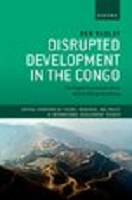Chapter 2 The return and spread of the transnational mining corporation in the African periphery
Abstract
The aim of this chapter is to historically situate the case of mining in the Congo within its broader regional context. It is organized in three sections, each corresponding to a separate stage of the process that led to transnational mining corporations once again becoming the dominant force assuming ownership and management of industrial mining projects across the continent. The first stage involved a diagnosis of the economic challenges faced by African economies from the mid-1970s as due to misguided state intervention and government corruption. Based on this diagnosis, during the second stage, the IMF and the World Bank advocated for, financed, and in many instances directly oversaw the liberalization, privatization, and deregulation of mining sectors in low-income African economies. The third stage required criminalizing African miners involved in labour-intensive forms of production and, if required, forcibly displacing them to make way for the construction of capital-intensive, foreign corporate-owned mines.


 Download
Download